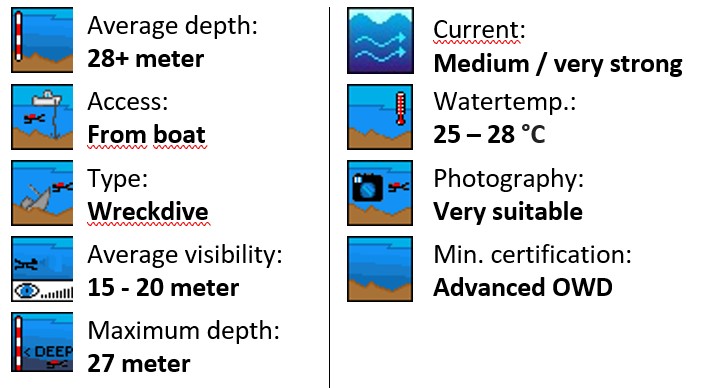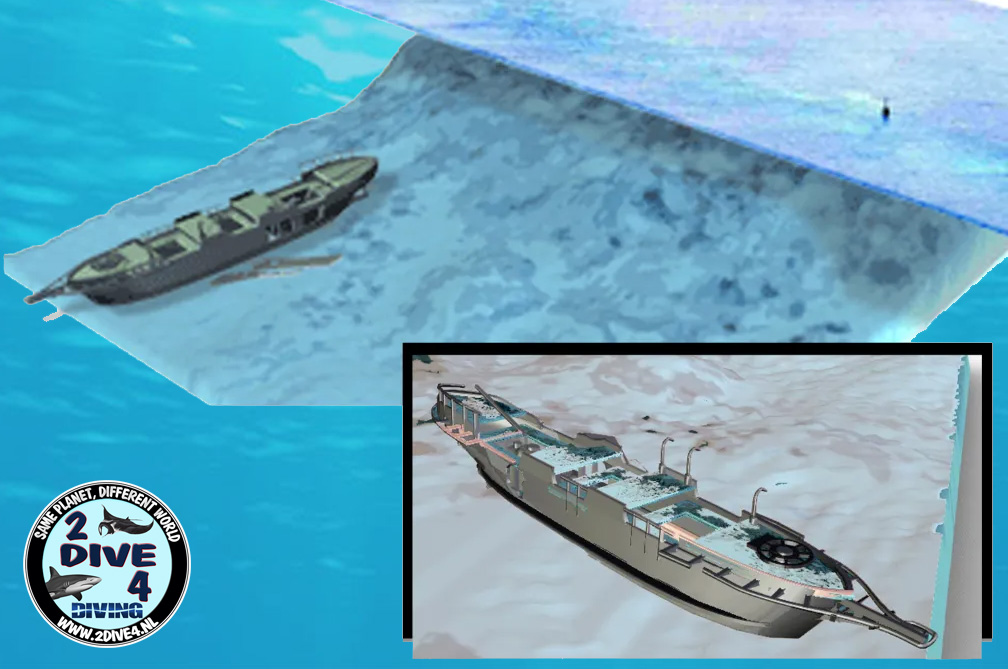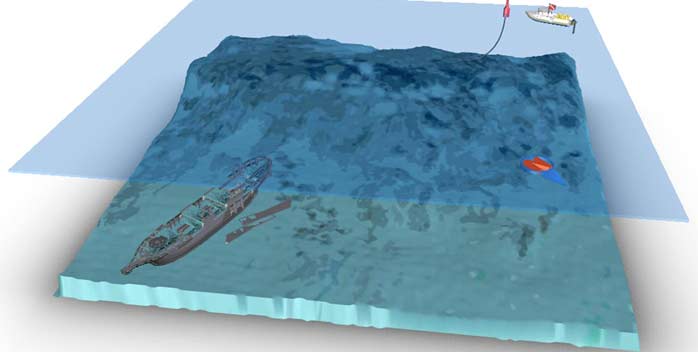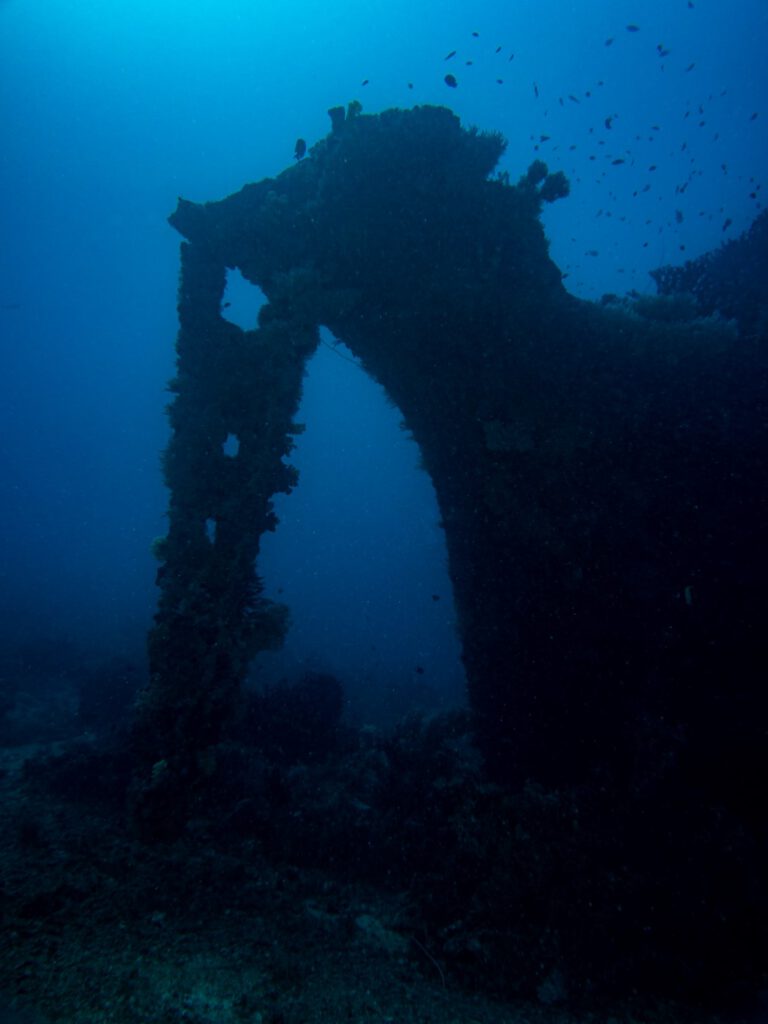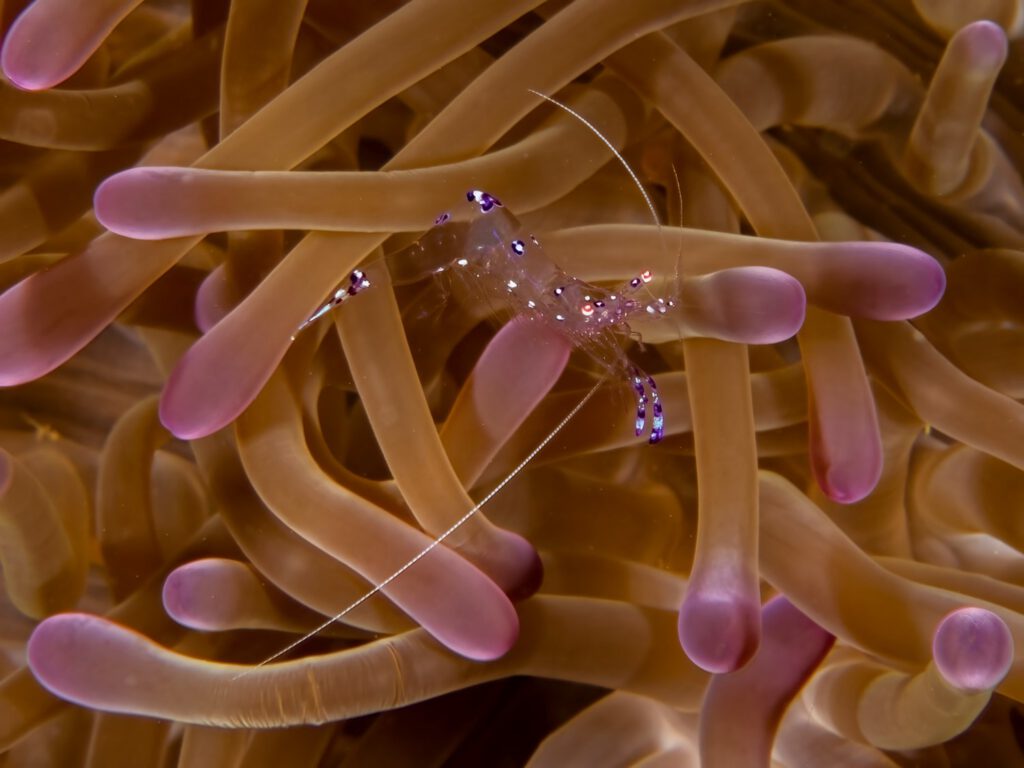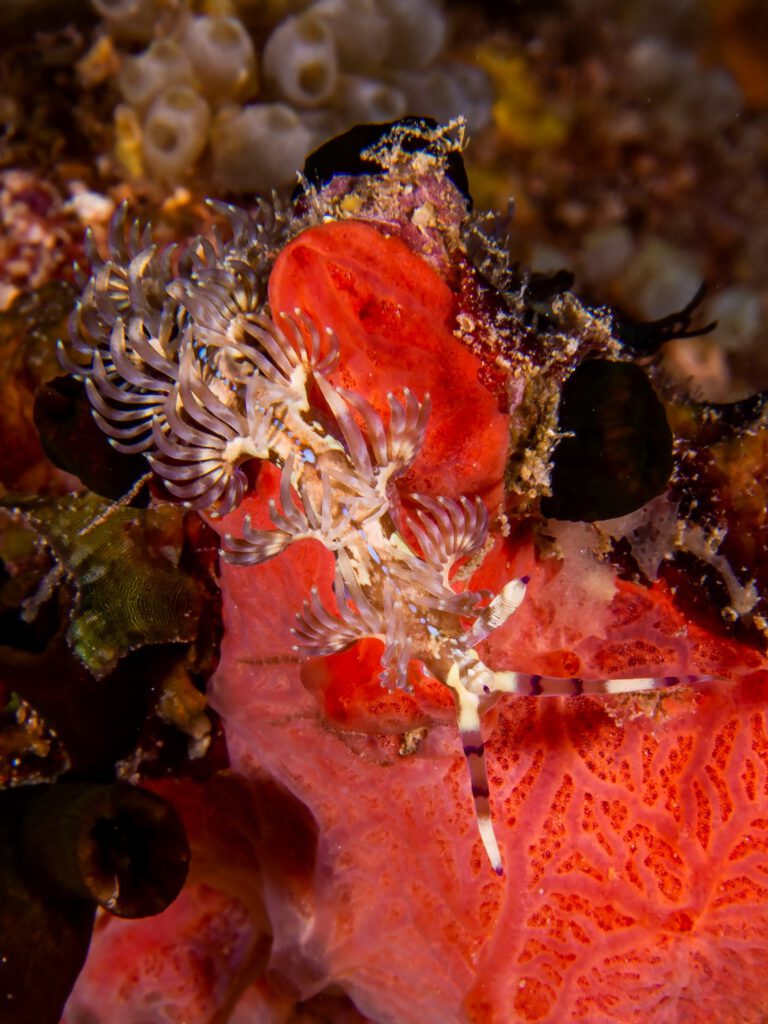Buoy #6 wreck - Malakal Channel - Palau
If you’re looking for an exciting dive site, then the Buoy #6 wreck in Malakal Channel, just 2 miles (3.5 km) from Koror, is an excellent choice. The wreck is a small fishing vessel that is resting upright near marker #6 at a depth of 80 feet (27 m), with the deck at 65 feet (21 m) deep. The hull is perpendicular to the southwest slope, and the bow is pointing northeast, offering excellent photographic opportunities.
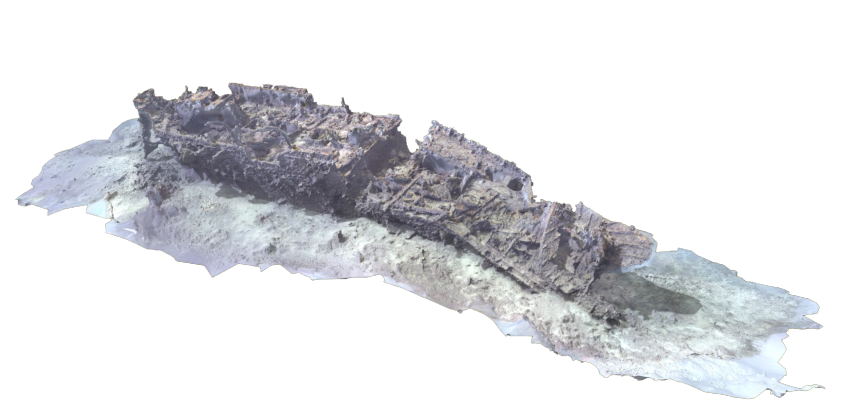
Buoy #6 wreck - Malakal Channel - Palau
If you’re looking for an exciting dive site, then the Buoy #6 wreck in Malakal Channel, just 2 miles (3.5 km) from Koror, is an excellent choice.
The wreck is a small fishing vessel that is resting upright near marker #6 at a depth of 80 feet (27 m), with the deck at 65 feet (21 m) deep. The hull is perpendicular to the southwest slope, and the bow is pointing northeast, offering excellent photographic opportunities.
This wreck is a true habitat for all kind of underwater creatures.
It’s fully covere with hard and softcorals and therefore one of the most colorfull wrecks in Palau.
NOTE: We make use of “Sketchfab” click HERE to view the navigation controls
Click on the 3D model below to move it around
All credits to the above Photogrammetry model goes out to Iho Melekhin
The story & the dive
- Type: Bonito fishing boat (converted to a submarine chaser)
- Length: 30 meter
- Destroyed on March 30th, 1944
- Depth: The wreck is resting upright near marker # 6 at 27 meters.
- Deck is 21 meters deep.
- The hull is perpendicular to southwest slope and the bow is pointing to the northeast.
- Orientation (from stern to bow): Northeast
The story
A pair of outlet conduits can be seen on the portside, which is a feature of bonito fishing boats.
A circular gun platform is mounted on the bow but the gun is missing.
Two sections of superstructure can be seen amidships.
A survivor of Iro related that he was rescued by a group of bonito fishing boats from Yaizu, Shizuoka Prefecture in Japan .
It is a known fact that, not only, commercial vessels but also many fishing boats were used for military purposes during the War. The ship of Bouy # 6 may have been a member of such a group.
Palau's WWII History
In early 1944, American sea power was beginning to challenge Japan’s Pacific frontier territories, and the islands of the Pacific became a key strategic target. With the elimination of the Japanese airforce and the establishment of air superiority by the US, the Japanese fleet in the islands was vulnerable to attack. The result was Operation ‘Desecrate One,’ a series of airstrikes on the Japanese fleet, which resulted in the sinking of more than 60 Japanese ships in Palau. Subsequent operations, ‘Snapshot’ and ‘Stalemate II,’ further decimated the fleet, leading up to the amphibious landings in Peleliu in September 1944.
After the war, the Japanese government was given permission to conduct salvage operations to raise money to pay war claims, and at least 27 of the wrecks were partially or completely salvaged. The remaining wrecks became encrusted with hard and soft corals, acting as artificial reefs and supporting a profusion of marine life in Palau’s rich marine environment.
With the growth of recreational scuba diving in Palau in the 1970s, the potential of the wrecks became more apparent, and local dive company Fish ‘n’ Fins, with the help of local brothers Tewid and Tiakl Boisek, who had worked with the salvage teams, located several more during the 1980s and 90s.
The dive
If you’re looking for an exciting dive site, then the Buoy #6 wreck in Malakal Channel, just 2 miles (3.5 km) from Koror, is an excellent choice.
The wreck is resting upright near marker #6 at a depth of 27 meter, with the deck at 21 meter deep.
The hull is perpendicular to the southwest slope, and the bow is pointing northeast, offering excellent photographic opportunities.
Diving at Buoy #6 wreck requires careful planning, and it’s essential to dive during slack tide for the best visibility, which is usually good during high tide. If you attempt to dive the wreck during low tide, visibility can be poor.
Care should be taken with this dive as currents can be extremely strong, so diving should only be attempted during slack tide.
It was built with the engine amidships, and two sections of superstructure can be seen. A circular gun platform is mounted on the bow, but the gun is missing. The wreck was partially salvaged after the war and is deteriorating fast, with some of the hull’s plates falling.
When diving at Buoy #6 wreck, your dive boat will be anchored close to channel marker #6 at 3 meter of water.
You will start your dive by swimming down the slope to the stern of the wreck, where you will see the corroded rudder.
If the current is still running, find shelter on the leeward side of the wreck until slack tide arrives.
As you explore the wreck, it’s important to swim back to the stern section when leaving and then head to the southwest slope to ascend, as Malakal Channel is a busy waterway, and ascending in the middle of the channel is not safe.
NOTE: It is also important not to surface in the middle of the channel as it does get very busy. Always keep to the slope on your ascent.
Flora & Fauna
It might be less sizeable than many of the monstrous wrecks here, but it is without doubt the most colorful.
Over the years, coral formations have grown all over the hull and they support a good variety of marine life.
Feasting on plankton swept in and out of Malakal Harbor on rising and falling tides, huge gorgonians and inflated, multihued soft corals decorate the deteriorating deck and hull from bow to stern.
The Malakal Channel, east of Koror, is one of two main channels that cut through the barrier reef and lead into the lagoon.
The channel slopes down from 3 meter (corals) to 21-24 meter (sandy bottom), with a large variety of healthy corals on both slopes, including massive Gorgorian fans.
Clusters of Black Sun Coral (Tubastraea Micrantha) and colorfull sponges decorate the sandy bottom around the wreck.
Numerous Blue Dragon nudibranchs can be found on the wreck (Their elongate bodies are designed to feed on hydroids)
The wreck is overgrown with hard and soft corals and is home to many tropical fish, making it a vibrant and beautiful dive site.
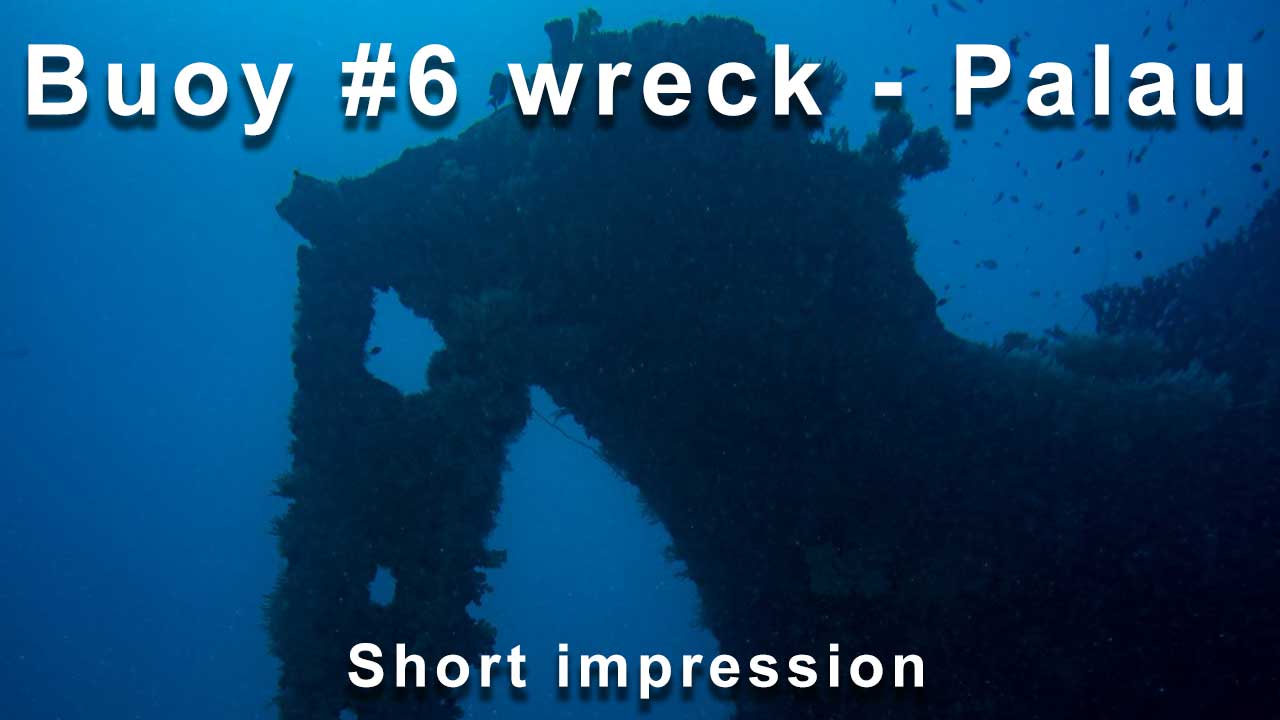
A short impression of diving the Buoy #6 wreck
Conclusion
This wreck is a true habitat for all kind of underwater creatures.
The wreck itself is not very interesting to explore, however the flora and fauna on and around the wreck are stunning!
Coral formations have grown all over wreck and there is a lot of (macro) life.
The Buoy #6 wreck in Malakal Channel is an exciting and beautiful dive site that offers excellent photographic opportunities for advanced wreck divers.
Careful planning is necessary, and diving should only be attempted during slack tide for the best visibility. So, if you’re up for an adventure, be sure to check out Buoy #6 wreck.
FINAL NOTE: Visibility can be poor, also be aware of very strong currents!
